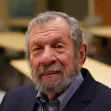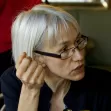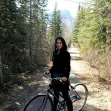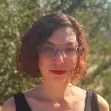The Daily Source of Urban Planning News
New York City's Data Collection Chopped in Half
New York City has for decades collected data about itself through more than 2,500 statistical indicators. But now, that number has been chopped down to about 1,200. Officials say it creates a streamlined look at the city, but others call it a loss.
LA's Wilshire Blvd. Bus-Only Lane Moves Forward
In an important step toward a bus-only lane on LA's busy Wilshire Blvd., the city council approved beginning an Environmental Impact Report for the project, to only minimal skepticism from the councilmember from the wealthier part of the area.
Urban Foragers Find Food in the City
Forage SF promotes the idea of eating uncultivated food found growing naturally, and even sells boxes of "wild food." Reporter Tara Lohan joins a forager, or "freegan", as they collect goodies from the streets.
Slowdown in Construction Spells Trouble for Dallas' Preservation Office
As construction has slowed in Dallas, its office of Preservation and Planning has seen a large deficit in funding from fees. Half of its positions could be on the chopping block. Preservationists worry, while officials say they have bigger concerns.
Wikiplanning a City
As part of their Envision 2040 process, the City of San José is soliciting user input through a web-based wiki.
Injecting Planning Issues into Seattle's Mayoral Race
Seattle is in the midst of a mayoral election, and while typical election issues are getting their own share of lip service from the candidates, land use is being overlooked.
New Use for Phone Booths
As cell phones have eliminated the need for phone booths, unused booths could play a key role in Spain's electric car revolution as charging stations.
Film Industry Lured to Michigan
In an otherwise stalled local economy, a few new construction projects are underway in Michigan, thanks to new tax incentives that are drawing the film industry to the state.
Tapping Outside Experience to Build U.S. High Speed Rail
As the race for high speed rail stimulus dollars gets underway, international firms stand to gain the most benefit as few if any U.S. firms are capable of building the rolling stock the new systems will need.
Cities in the Sand: U.S. Military Bases in Iraq
U.S. Military bases in Iraq are being consolidated, but their footprint is hard to ignore. Many operate much like small cities, housing as many as 20,000 people and all the services and infrastructure they require.
Could Old Bay Bridge Span Become a Park?
Architect Ronald Rael proposes preserving the discarded span of the San Francisco Bay Bridge and turning it into a park and mixed-use development, in the spirit of NY's High Line.
The Solar Co-op
In Brighton, Colorado, solar panels on one person's farm could be built by an investment from another local, creating the first solar co-operative in the U.S.
BLOG POST
China and Climate Change
<p> In my first week here in Beijing, I have spoken to a number of scholars here about climate change. A few observations; </p> <p> 1. China's scholars are thinking about climate change mitigation but I haven't met many talking about adaptation. </p>
Practical Lessons From Portland
Bill Fulton visits Portland, and comes back with six practical lessons that other cities can take from the 'planner's nirvana.'
Linking UK Centres with High-Speed Rail
Eleven major cities in the UK, including council leaders representing all three major political parties, have begun a campaign for a high-speed rail network linking them together to serve the entire country.
The City Planner Behind 9/11
Mohamed Atta, one of the 9/11 terrorists, pursued a masters degree in city planning before the attacks. Slate's Daniel Brooks reads Atta's masters thesis, and finds a strain of anti-Western modernism that is revealing.
Dubai's Metro Rail Starts Rolling
Citywide metro rail service is set to begin operations today in Dubai. The system will start out with ten operational stations, but eventually include 47 stops along 70 kilometers of track.
MTA Struggles to Relocate Residents
As construction on the Second Avenue subway in New York City is set to begin next year, MTA and current residents struggle to answer the question of where to relocate the people in its way.
Pavement to Parks Sees Progress in San Francisco
The city of San Francisco has barricaded two new large swatches of land to be used as part of its Pavement to Parks projects, and is enjoying a flood of support from residents, businesses, politicians, and local educational institutions.
Vegas Tourism Takes A Dive
Formerly thought to be recession-proof, the tourist mecca of Las Vegas is taking a hard hit during the current economic recession.
Pagination
Smith Gee Studio
City of Charlotte
City of Camden Redevelopment Agency
City of Astoria
Transportation Research & Education Center (TREC) at Portland State University
US High Speed Rail Association
City of Camden Redevelopment Agency
Municipality of Princeton (NJ)
Urban Design for Planners 1: Software Tools
This six-course series explores essential urban design concepts using open source software and equips planners with the tools they need to participate fully in the urban design process.
Planning for Universal Design
Learn the tools for implementing Universal Design in planning regulations.


































